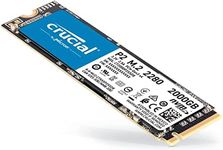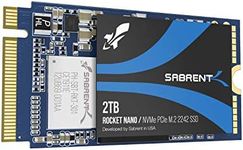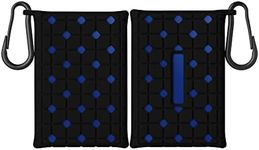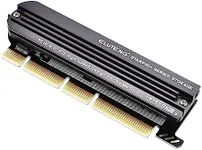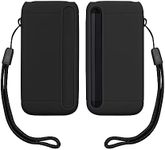Buying Guide for the Best M2 Ssds
When it comes to picking the right M.2 SSD for your needs, it's important to understand the key specifications that will impact performance, compatibility, and overall user experience. M.2 SSDs are a type of solid-state drive that offer faster data transfer speeds and more compact form factors compared to traditional SSDs. By understanding the key specs, you can make an informed decision that best suits your requirements.Form FactorThe form factor of an M.2 SSD refers to its physical size and shape. M.2 SSDs come in different lengths, such as 2242, 2260, 2280, and 22110, where the first two digits represent the width (22mm) and the remaining digits represent the length (42mm, 60mm, 80mm, and 110mm respectively). It's important to check your device's compatibility to ensure the M.2 SSD will fit. For most users, the 2280 form factor is the most common and widely supported.
InterfaceThe interface of an M.2 SSD determines how it connects to your computer and the speed at which data can be transferred. The two main interfaces are SATA and NVMe (PCIe). SATA M.2 SSDs are slower but more affordable, with speeds up to 600 MB/s. NVMe M.2 SSDs, on the other hand, offer significantly faster speeds, ranging from 1,000 MB/s to over 7,000 MB/s, making them ideal for high-performance tasks like gaming, video editing, and large file transfers. Choose NVMe if you need top-tier performance, otherwise, SATA can be a cost-effective option.
CapacityCapacity refers to the amount of data the M.2 SSD can store. Common capacities range from 128GB to 2TB or more. Your choice should be guided by your storage needs. For basic tasks like web browsing and document editing, 256GB to 512GB may suffice. For gaming, media storage, or professional work, consider 1TB or higher to ensure you have ample space for applications, files, and future growth.
Read/Write SpeedsRead and write speeds indicate how quickly data can be read from or written to the SSD. Higher speeds result in faster boot times, quicker file transfers, and improved overall system responsiveness. Read speeds are typically higher than write speeds. For general use, read speeds of 1,500 MB/s and write speeds of 1,000 MB/s are adequate. For demanding applications, look for read speeds above 3,000 MB/s and write speeds above 2,000 MB/s.
Endurance (TBW)Endurance, measured in Terabytes Written (TBW), indicates the total amount of data that can be written to the SSD over its lifespan. Higher TBW values mean the drive can handle more data writes before it may start to wear out. For typical consumer use, a TBW of 150-300 is usually sufficient. For heavy usage scenarios like video editing or running virtual machines, look for higher TBW ratings to ensure longevity.
WarrantyThe warranty period offered by the manufacturer can give you an idea of the product's reliability and the company's confidence in its durability. Warranties typically range from 3 to 5 years. A longer warranty period can provide peace of mind and protection against potential defects or failures. Consider choosing an M.2 SSD with a longer warranty if you plan to use it intensively or want added assurance of its longevity.
